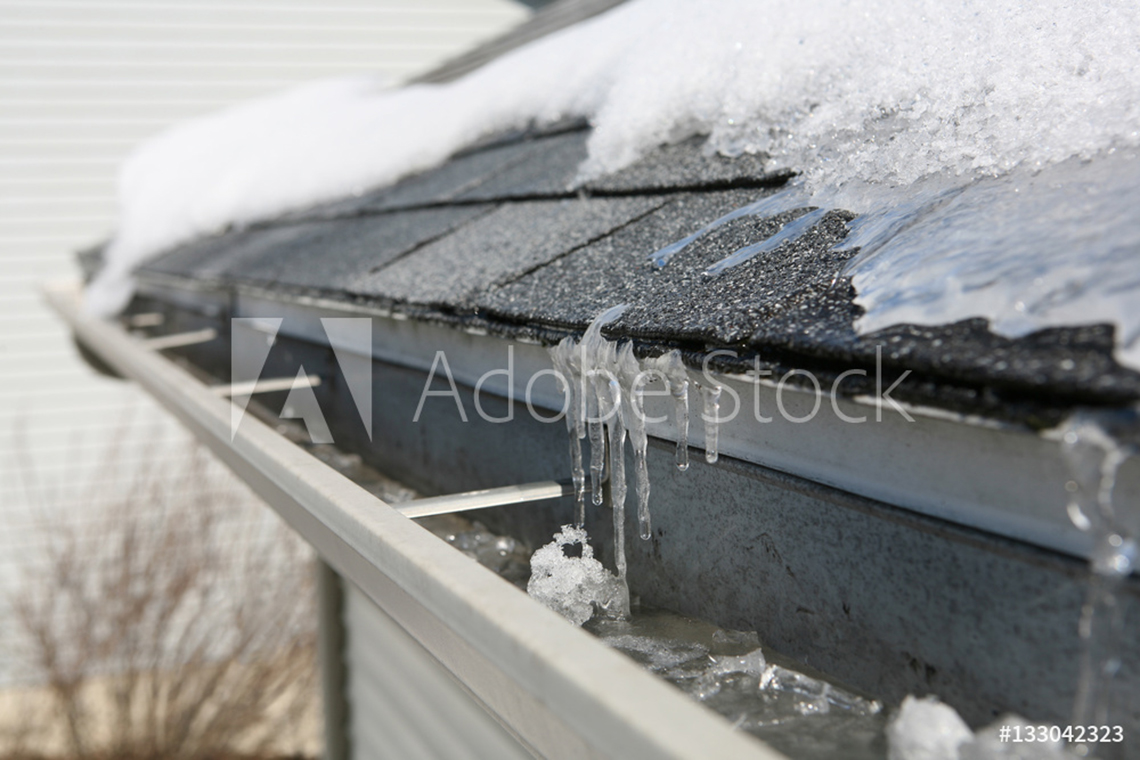[blank h=”30″ hide_low_res=”” class=””]
[/blank]
[column width=”1/1″ last=”true” title=”” title_type=”single” animation=”none” implicit=”true”]
You can help prevent serious damage to both the roof and inside of your home by minimizing the likelihood that an ice dam will develop, and by removing one as soon as you spot it. Ice dams can form when water from melting snow re-freezes at the edge of your roofline. Without roof snow removal, an ice dam may grow large enough to prevent water from draining off the roof. This water can then back up underneath roof shingles and make its way into your home.
How to Help Prevent an Ice Dam from Forming:
- Remove snow from your roof after every storm. To begin with, use a roof rake to clear snow from the edge of your roof upwards of three to four feet immediately after each storm. In addition to helping prevent an ice dam from forming, this will lessen the stress on your home’s roof. The amount of snow and ice your roof can support will depend on a number of factors, including the roof type and the age and condition of the structure. But a good rule to keep in mind is if more than a foot of heavy, wet snow and ice has accumulated on your roof, you should have it removed.
- Clear downspouts. An easy way to help snow and ice drain off your roof is to make sure the area around your downspouts is clear. This can help prevent standing water from collecting near the gutter downspout.
How Do You Know if You Have an Ice Dam?
- Look carefully at the icicles around the exterior of your house. If they are confined to the gutters and there is no water trapped behind them, then an ice dam has likely not formed. Nonetheless, icicles can pose a danger to people when they fall off, so try to safely knock them down while standing on the ground, making sure not to stand directly beneath them. If you cannot safely reach them from the ground, consider hiring a contractor (ahem.) to help.
- Check for water stains or moisture in the attic or around the tops of exterior walls on the top floor of your house. Stains and moisture may indicate that an ice dam has formed and water has penetrated the roof membrane.
Ice Dam Removal:
- Melt the ice dam. Fill a nylon stocking with calcium chloride ice melt, and place it vertically across the ice dam so that it melts a channel through the dam. If you try this, make sure you can safely position the ice melt on your roof, and make sure to use calcium chloride, not rock salt. Rock salt will damage your roof. Also, be aware that shrubbery and plants near the gutters or downspouts may be damaged.
- Get professional help. If you cannot safely reach the roof, avoid using a ladder in snowy and icy conditions. Consider hiring Diamond Hill Builders for ice dam removal and helping you with snow management this winter. We can also provide a solutions based estimate to eliminate or reduce the occurrence of ice dams over the long-term.
Long-term Tips for Preventing Ice Dams:
- Insulate your attic. Make sure your attic is well insulated to help prevent the melting-and-freezing cycle that causes ice dams to form. Check and seal places where warm air could leak from your house to the attic, including vent pipes, exhaust fans, chimneys, attic hatches and light fixtures.
- Install a water-repellent membrane. When replacing a roof, make sure to install a water repellent membrane underneath the shingles. This acts as an extra barrier that helps prevent water from seeping inside the building.
[/column]






